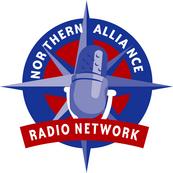
« Liberal Network, Take 2 | Main | Caption Contest #8 Winners! »
Big thanks to Captain Roger Crossland, who alerted me to this Newsmax article I missed in December, when it first ran. The first soldier nominated for a Medal of Honor for combat in the war on terror, Sergeant First Class Paul Smith gave his life on the battlefield in Iraq, at the airport in Baghdad, while fighting to save the lives of the men he led.
During Operation Iraqi Freedom, SFC Smith was a platoon sergeant/acting platoon leader in Bravo Company, which was in contact with Saddam�s forces nearly every day.The drive on Baghdad from the south eventually carried the task force containing Smith�s parent 11th Engineers into Saddam International Airport. By the morning of April 4, the aggressive U.S. force was well inside the airport complex, and a containment pen had to be quickly constructed to secure the enemy prisoners.
There was a tall wall paralleling the north side of the highway servicing the airport -- on the battalion�s flank just behind the front lines. Smith decided to punch a hole in it, so that the inside walls would form two sides of a triangular enclosure, and the open third side could be closed off with rolls of concertina wire.
At Smith�s direction, an armored combat earthmover crashed through the wall and, while wire was being laid across the corner, one of his squad�s two armored vehicles moved toward a gate on the far side of the adjacent courtyard.
When the driver pushed open the courtyard gate to open a field of fire, he immediately observed up to 100 enemy soldiers massed to attack. The only way out was the hole the engineers had put in the highway wall and the gate that faced the enemy, who began to open up on the U.S. troops with heavy fire --
Enemy soldiers stationed in trees and atop a nearby terrain-commanding tower fired a barrage of rocket-propelled grenades into the U.S ranks. An enemy mortar round hit the engineers� lead armored vehicle, seriously wounding three soldiers inside.
Dodging fire, Smith helped evacuate them to an aid station, which was also coming under attack. The consummate professional, Smith promptly organized the engineers� defenses, noting that all that stood between the attacking enemy and the task force�s vulnerable headquarters were about 15 to 20 troops.
A second armored vehicle was hit by an RPG, but was not completely knocked out of action. Simultaneously, enemy soldiers began charging from the courtyard gate or scaling a section of the wall, jumping into the courtyard, which had become a deadly trap.
Smith took personal command of the smoking and damaged second armored personnel carrier, maneuvering the big vehicle into a position where he could bring its heavy .50-caliber machinegun fire to bear on the determined enemy.
Another remarkable soldier on the field that day, First Sergeant Tim Campbell, realized that they had to knock out the Iraqi position in the enemy-held tower. After consulting with Smith, Campbell led two soldiers to take the tower. Armed only with a light machinegun, a rifle and a pistol with one magazine, the small force advanced behind the smoke of the tall grass that had caught fire from exploding ammunition.
Constantly exposed to heavy enemy fire, Smith resolutely stood by his machine gun, yelling for more ammunition three times during the fight. The warrior blasted through 400 rounds before he was struck down and mortally wounded by the withering small arms fire.
According to the citation, his sustained fire killed 20 to 50 Iraqis, allowing American wounded to be evacuated, saving the aid station -- as well as the task force headquarters.
Later, back in the U.S., the senior U.S. commander on the ground in Iraq, Lt. Gen. William S. Wallace, noted Smith�s actions in an emotional speech. Wallace described how Smith told his men, �Every time you hear the .50 caliber go silent, hand me up a can of ammo.�
"The gun went silent three times," recalled Wallace. The fourth time, there was no call for more ammo. Smith had died in the service of his country, personally credited with saving the lives of so many of his comrades.
A much-decorated veteran of the 1991 Persian Gulf War, Smith was a 33-year-old from Tampa, Florida. He left behind a wife, a son and a daughter.
You can find out more about SFC Paul Smith, his life, his family, and their status at this excellent site run by the St. Petersburg Times, "The Last Full Measure of Devotion". It will take a number of reviews, up to a dozen, before a decision is made on a final recommendation to Congress to award the Medal of Honor. However the government chooses to honor him, we should all know SFC Paul Smith's story and recognize the tremendous courage and sacrifice he made to make us more safe and secure.
UPDATE: My colleague Mitch notes that SFC Smith would be the first American nominated for the MoH in the current war, and provides a link in the comments to a fascinating story of the British Special Forces soldier who got the first MoH.
Sphere ItTrackback Pings
TrackBack URL for this entry is

captain*at*captainsquartersblog.com


My Other Blog!
E-Mail/Comment/Trackback Policy
Comment Moderation Policy - Please Read!
Skin The Site








Hugh Hewitt
Captain's Quarters
Fraters Libertas
Lileks
Power Line
SCSU Scholars
Shot In The Dark
Northern Alliance Radio Network
Northern Alliance Live Streaming!



Des Moines Register
International Herald Tribune
The Weekly Standard
Drudge Report
Reason
The New Republic
AP News (Yahoo! Headlines)
Washington Post
Guardian Unlimited (UK)
New York Times
Los Angeles Times
OpinionJournal
Pioneer Press
Minneapolis Star-Tribune
MS-NBC
Fox News
CNN

Design & Skinning by:
m2 web studios
blog advertising

- dave on Another National Health Care System Horror Story
- brooklyn on Hillary Not Hsu Happy
- rbj on Hillary Not Hsu Happy
- Robin S on Requiem For A Betrayed Hero
- Ken on Hillary Not Hsu Happy
- Robin S. on Requiem For A Betrayed Hero
- RBMN on Hillary Not Hsu Happy
- NoDonkey on Another National Health Care System Horror Story
- Robin Munn on Fred Thompson Interview Transcript
- filistro on When Exactly Did Art Die?










